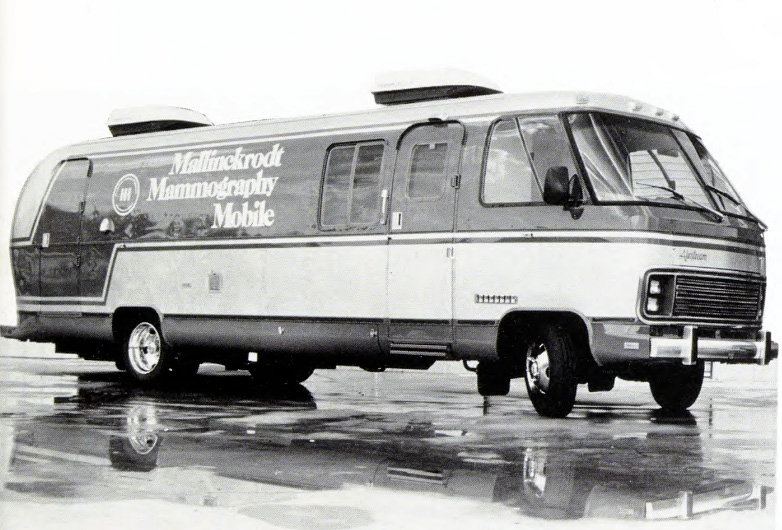Driven to Make a Difference
The story of WashU’s mobile mammography van and the evolution of breast imaging in St. Louis and beyond
By Ginger O’Donnell
At WashU, the pursuit of public health is about enabling people to lead longer, healthier lives. Long before the establishment of a new school dedicated to this effort, a team of doctors at Washington University School of Medicine in St. Louis boldly advocated for its mission: combatting breast cancer, a top cause of death for women in the United States.
The story starts with Barbara Monsees, MD ’75, then a young resident in pediatrics at St. Louis Children’s Hospital, for whom analyzing X-rays at the end of the day was her favorite part of the job. Interacting with a new CT scanner circa 1977 cinched her decision to pivot to radiology. “The scanner was one of the first in the country,” she says. “Looking back, it was absolutely primordial — the resolution, the length of time for scans — but it was so different to see cross-sectional imaging. At that moment, I was certain I had chosen the right specialty.”
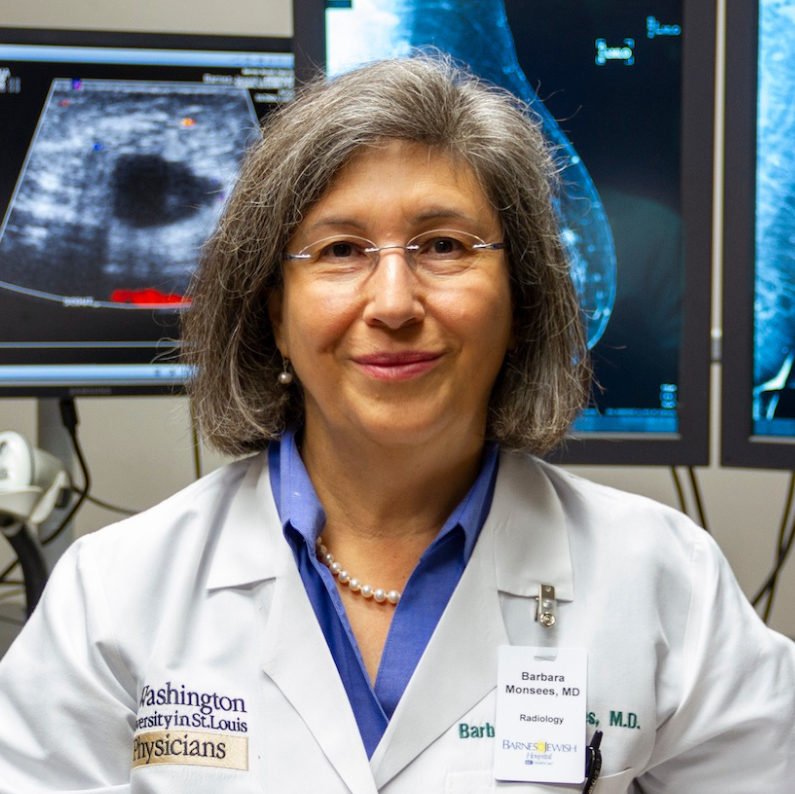
Barbara Monsees, MD ’75
“From a public health standpoint, we knew we had to appeal to women themselves.”
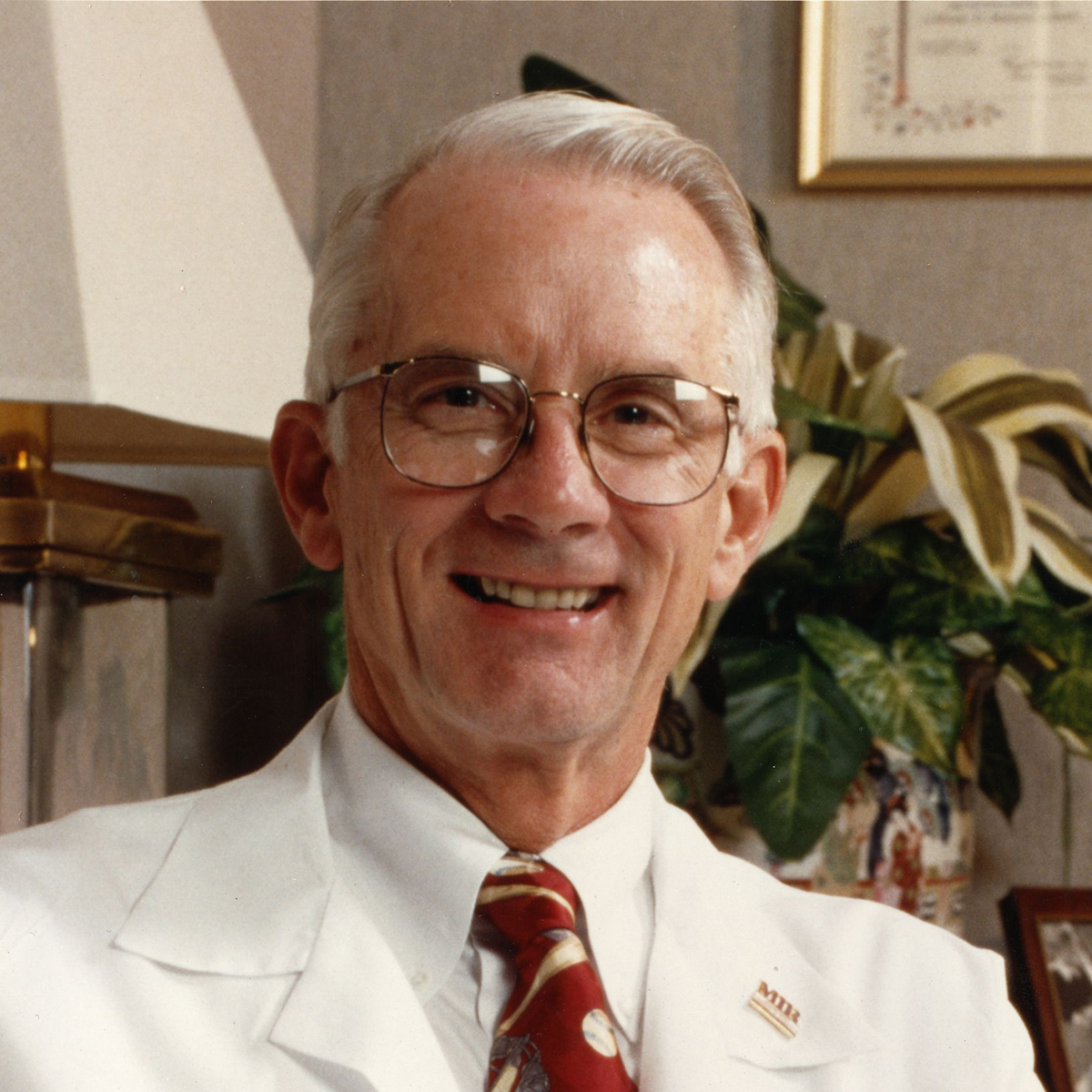
Ron Evens, AB ’61, MD ’64
“I’m proud of being an early supporter of women at Mallinckrodt. Barbara was a gnarly leader who made Mallinckrodt nationally and internationally famous.”
Women at the wheel: Hatching plans
Monsees was driven by more than cutting-edge equipment. She was deeply committed to providing the latest, most thorough care to each patient, introducing new technologies along the way and helping women navigate the complexities of the health-care system. When she joined WashU Medicine Mallinckrodt Institute of Radiology (MIR) in the early 1980s, the latest research pointed to mammography screening as the best way to mitigate disease and prevent early death from breast cancer. But this approach was novel at the time. Mammography had no insurance code to cover costs and often met with resistance from traditionalist doctors.
Determined to troubleshoot these challenges, Monsees engaged in lively “tête-à-têtes” with her colleague and fellow MIR radiologist, Judy Destouet, MD, and Ron Evens, AB ’61, MD ’64, MIR’s director at the time. “We knew we had to appeal to women themselves to introduce mammography to the population,” she recalls. “It was invigorating to make all those plans.”
Eventually, their attention turned to a North Carolina doctor named Richard Bird, whose private practice drove mammography services to the people via a traveling van. Evens, who holds a bachelor’s degree in economics and would later serve in numerous hospital and university administrative roles, gave the two women his blessing to build off that model and launch a van of their own — charging them to maximize efficiency and minimize costs. “I’m proud of being an early supporter of women at Mallinckrodt,” he says.
The beginnings were scrappy: “We bought an RV — an airstream trailer — put a mammography unit and a processor in it, and made it work,” Monsees says.
WashU and women’s breast health: An evolving journey
- Launches in August 1986
- Latest X-ray equipment, on-the-spot film processing
- ~20 minutes per patient; $50 per mammogram


- Barbara Monsees, MD, first section chief, Breast Imaging
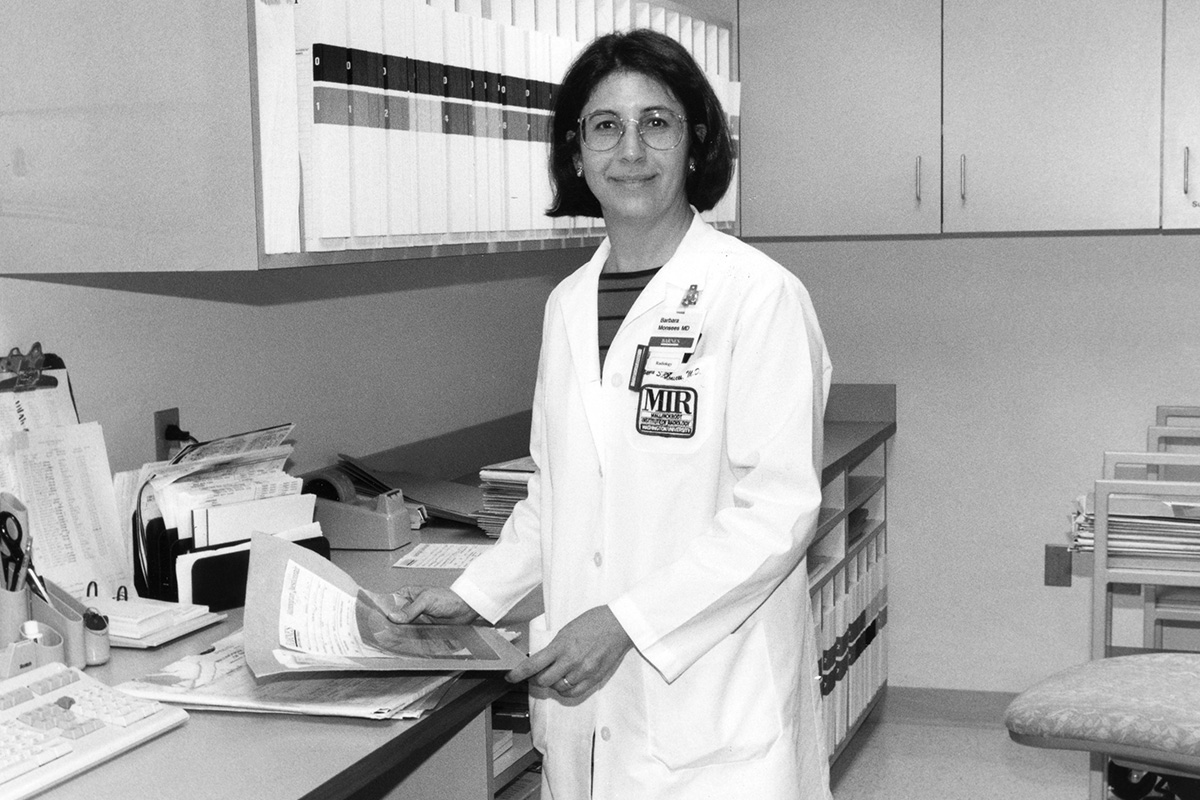
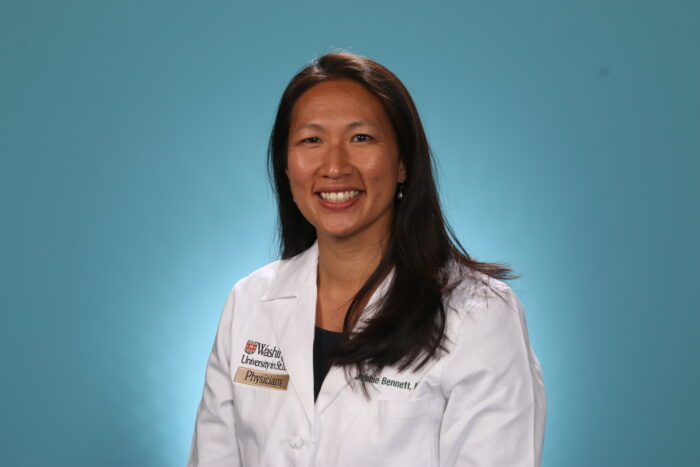
Health on the move
On Aug. 11, 1986, the van hit the road as one of the nation’s first mobile mammography units. It sat in Schnucks parking lots across the city, waiting for women after they finished grocery shopping and advertising its schedule next to food specials in the market’s weekly flyers. It visited various corporations, such as Monsanto (now Bayer), which often paid for their employees to participate, helping the van break even. And it went to free clinics in underserved communities, with follow-up care underwritten by MIR should abnormalities be found, including areas of the Missouri bootheel, where many women living in rural communities had no other method of access.
Monsees was knee-deep in the logistical details. To optimize care for every woman, she and her team continuously refined their processes and factored in new considerations. They tracked all outcomes in a detailed database, with a dedicated clerk to follow up on all positive exams, and sent every woman the report of her screening examination — a highly innovative practice at the time. They also helped women navigate more mundane concerns, such as directions and parking costs, which they found could affect a patient’s ability to show up for appointments.
“We didn’t want any woman to fall through the cracks,” Monsees says. “To make sure we got it right, Judy and I would rethink our plans over and over. Incrementally, we were able to make things easier for our patients as the technology got better and we realized how we could implement it.” This materialized, for example, when the third iteration of the van converted fully to digital imaging in 2006.


Steering the field
Over the years, both MIR and Monsees’ career evolved as breast imaging grew from mammography alone to a multimodal specialty. Encompassing other methods such as ultrasound and MRI, as well as interventions like biopsy, a new breast-imaging section was formed at MIR and WashU Medicine, with Monsees appointed as the inaugural chief. She would go on to mentor hundreds of residents and nearly 100 breast-imaging fellows during her tenure, and she contributed her expertise to numerous local and national committees focused on topics like national standards for mammography quality assurance.
“Barbara truly was a gnarly leader,” Evens recalls. “She was one of the people leading the early research about the effectiveness of mammography screening. She made WashU and Mallinckrodt famous, both nationally and internationally.”
Meanwhile, Monsees herself became a breast cancer survivor, catching it at an early stage due to a screening mammogram, which reinforced her motivation to make such services available to all women.
Some of the many areas served
St. Louis
St. Charles
Ferguson
Perryville
New Madrid
Maplewood
Edwardsville, Ill.
Florissant
Charleston
Sullivan
Centralia, Ill.
De Soto
Kirkwood
Potosi
Cahokia Heights, Ill.
Kennett
Alton, Ill.
Troy
Spanish Lake
O’Fallon
All mapped locations
Open road
As the field expanded from detection and diagnosis to treatment, Monsees and her colleague, Gordon Philpott, MD ’61, a longstanding WashU surgeon to whom she often referred patients, joined forces to advocate for a new breast health center that would offer screening, diagnostic testing, and surgical consultations in one space. In 1997, it opened in the Barnes-Jewish Hospital North Campus Kingshighway building (the former Jewish Hospital) as one of WashU Medicine’s first multidisciplinary health centers.
Debbie Bennett, MD, following in Monsees’ footsteps as the Ronald and Hanna Evens Professor of Women’s Health, serves as chief of breast imaging at WashU Medicine and oversees screening and breast-imaging services offered at the center. “This is the house that Barbara built,” says Bennett, who is committed to extending Monsees’ legacy of providing high-quality care for women throughout the community.
Today, mammography is the most frequently used screening test in the world — shown to reduce breast-cancer death rates by approximately 30%. In St. Louis, as of fall 2024, late-stage breast-cancer diagnoses have decreased by 31% in the city overall, and by 33% among Black women in north St. Louis County, a population disproportionately affected by this form of cancer.
Three WashU alumni helped initiate these changes: Monsees with her drive, Evens as a supportive, progressive leader, and Philpott as an open-minded surgeon and closely collaborative colleague. Together, they brought the latest science and technology directly to women, starting with that Airstream RV. Their impact includes countless lives saved, and, notably, lives shaped by a powerful, personal vocation.
“The journey we’ve taken over the decades amounts to whole careers,” Monsees says. “It was a gift to have that sense of purpose. It was our mission to help people, and I think our efforts paid off.”
In St. Louis, as of fall 2024, late-stage breast-cancer diagnoses have decreased by 31% in the city overall, and by 33% among Black women in north St. Louis County, a population disproportionately affected by this form of cancer.
